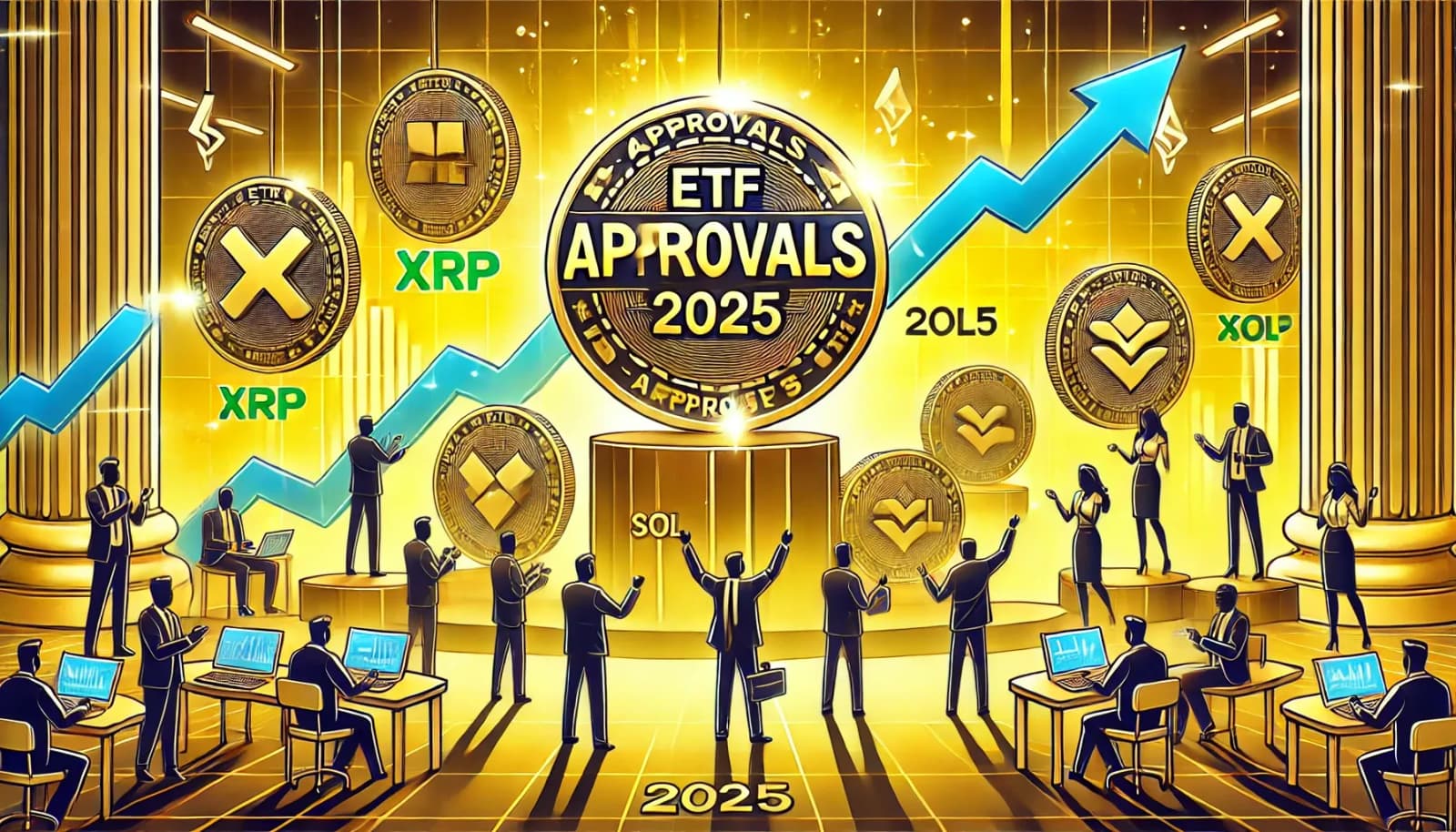The SEC approving Bitcoin and Ethereum ETFs for Hashdex and Franklin Templeton amidst a record-breaking ETF outflow has triggered speculations of 2025 being the crypto ETF. Bloomberg analysts are predicting that ETFs for Solana, XRP and other digital assets will get the nod in the coming year.
The new wave of spot ETFs will be dominated by XRP and SOL, followed by rising demand from Lightchain AI (LCAI). While the two altcoins have an established crypto market, Lightchain AI is just gaining traction with its blockchain and artificial intelligence innovations.
Now, Bloomberg analysts are predicting that these three digital assets will redefine the crypto world as institutional interest in them grows. But before we delve into that, let's get to know ETFs.
What are crypto ETFs?
Exchange Traded Funds, or ETFs, act as money pools where a mix of goods, debts, shares, and digital currencies are kept. This provides the buyers with an easy way to spread their holdings without handling the items.
Crypto ETFs have faced a lot of issues all over the world because of a lack of clarity in the face of market ups and downs. However, Bloomberg analysts are of the opinion that 2025 will see a shift in ETF Outlook as states make way for better laws for digital assets and ease limits.
As cryptocurrencies grow and get adopted by old money groups, there is an increasing need for simple ways of assessing them, like ETFs. This is visible in how the first Bitcoin ETF was approved in Canada, which received big flows, forcing other nations to launch their own types.
The Three Crypto ETF Contenders
In 2025, XRP, Solana, and Lightchain AI will be the three most important coins in the ETF.
XRP
The Ripple Labs-created digital asset XRP facilitates cost-effective and fast cross-border transactions with a consensus protocol that has a 3-5 second settlement time. This substantially reduces delays.
Across the world, financial institutions have adopted XRP because of its efficiency in payment. This includes Santander using XRP for blockchain-based international transactions. XRP lets banks source liquidity in real-time on demand and eliminates the use of pre-funded nostro accounts in this case. This reduced the costs and streamlined the operations.
Solana
Solana, on the other hand, is a leading DeFi platform where NFTs are sold, and hence it draws considerable institutional interest. The low-cost, high-speed transactions of the Solana blockchain make it ideal for NFT marketplaces and DeFi protocols. In the third quarter of this year, decentralised apps from the network received $173 million in institutional investments, a 54% jump from Q2 2024.
It has become a prominent marketplace for projects like Magic Eden due to the high efficiency and scalability of the network. Also, the SOL network comes integrated with payment solutions like Visa in combination with the USDC stablecoin, which shows the increasing institutional appeal of the blockchain.
Lightchain AI.
In the midst of the two established players, Lightchain AI is making an impact with its combo of AI and blockchain innovation. At present it is priced at $0.003 for its presale phase, but its AI-powered dApps and use of the Artificial Intelligence Virtual Machine (AIVM) and Proof of Intelligence (PoI) protocol are likely to attract institutional investors.
While PoI is a consensus mechanism that rewards nodes for performing AI computations, such as training machine learning models and running predictive analytics; AVM is a specially designed computational layer to handle AI tasks, making it applicable across sectors like finance, logistics, and healthcare.
If Lightchain AI gets the ETF nod, then investors who have exposure to AI-integrated blockchain solutions will get ample opportunity to profit as the sector is likely to see rapid growth in the coming years.
The coin could reach a trading value of $5–$10 by 2025
Benefits of ETF approval
The approval of Lightchain AI, SOL, or XRP will provide the following benefits:
- The first and foremost is the regulated exposure financial institutions will get to invest in digital assets without holding risks.
- The increase in ETF liquidity will draw a broader audience, which will enhance the demand for crypto assets.
- When coins are included in ETFs, it upholds the long-term viability and credibility of them.
- By diversifying crypto ETF options, investors will get access to different digital assets, which creates a balanced portfolio and spreads the risk.
- Last but not least, the ETF approvals mean mainstream acceptance of cryptocurrencies as an investment option.
Now as Bloomberg analysts have suggested an ETF proliferation is likely to happen in 2025, specially for these three coins, institutional capital will flow into these projects.
This comes at a time when the SEC has approved Bitcoin and Ethereum ETFs for Hashdex and Franklin Templeton, making the coins more accessible to investors. While the Hashdex Nasdaq crypto ETF will trade on the Nasdaq and track the Nasdaq Crypto US Settlement Price Index, the Franklin Crypto ETF will list on the Cboe BZX Exchange and follow the Institutional Digital Asset Index.
Meanwhile, Bitcoin and Ethereum recorded the biggest single-day outflow of $680 million on December 19 after days of higher inflows. Ethereum ETF's net outflow rose to $60 million after an 18-day streak of higher inflows. Grayscale and Fidelity led in this outflow surge while BlackRock remained stable.

